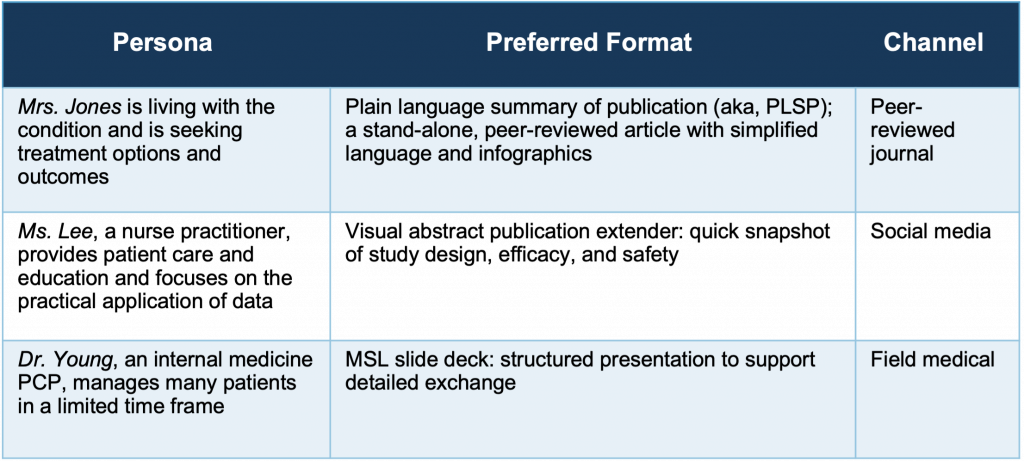
Scientific publications remain a foundation of evidence-based medicine, but the landscape of these publications is changing rapidly. Information is spreading faster across digital platforms; patients expect greater transparency; and artificial intelligence (AI) introduces new questions about authorship, accuracy, and trust.
If you are leading a publication strategy today, the challenge is not just getting published. It is ensuring your science is understood, trusted, and acted on.
Clarity: Aligning Strategy and Messaging
Clarity begins with alignment. Your communication goals must connect with the needs of your audience. To sharpen clarity in publications:
Map the patient journey
Where do patients encounter challenges like diagnosis delays, treatment decisions, or adherence barriers? These touchpoints reveal evidence gaps that matter most to clinicians, payers, and advocacy groups. Plan publications that directly address those needs.
Use a planning matrix
Link audiences, personas, and preferred formats/channels to ensure every output is impactful. AI can assist with persona development when guided well. In the following table, AI was used to develop the personas for the patient, nurse practitioner, and primary care physician (PCP).
Example Matrix:

Credibility: Safeguarding Scientific Trust
Recent debates highlight the risk of AI-generated content. For example, work that seems novel may repackage existing ideas without attribution. As reported in Nature,¹ researchers are questioning originality, attribution, and trust in scientific publishing. These challenges make rigorous publication planning more important than ever.
AI can be a valuable tool for sparking ideas or visualizing concepts, but human judgment is needed at every stage of content development to ensure scientific integrity and credibility. Protecting credibility means:
- Maintaining rigorous internal reviews to confirm accuracy and originality
- Applying disclosures and ethical standards across all outputs
Many organizations are now setting AI-use policies. Prioritizing accuracy, transparency, and oversight ensures credibility remains intact.
Connection: Extending Scientific Impact
Leverage publication extenders
Such as videos or podcasts featuring authors and researchers, curated summaries that highlight the latest research, or animated summaries. These educational tools help reframe complex data in more accessible ways.
Use amplifiers
Such as social media teasers, institutional repositories to allow for broader discoverability, or author networks that encourage authors to share publications via their own professional channels. These can be shared on third-party platforms to spark curiosity and drive audiences back to the source publications.

Bringing It All Together
Clarity, credibility, and connection do not happen by chance. They require strategic foresight, structure, and an integrated approach that adapts to new challenges and opportunities. By planning with these principles in mind, your publications can achieve greater reach, stronger engagement, and lasting trust. In the age of AI, these outcomes rely on human expertise. While AI can enhance efficiency, it is sound judgment and scientific integrity that ensure publication strategies remain clear, credible, and impactful.
At JB Ashtin, we design publication approaches that protect integrity while maximizing reach and engagement. Ready to strengthen your publication strategy? Let’s talk.
1. Ananya. What counts as plagiarism? AI-generated papers pose new risks. Nature. 2025;644(8077):598-600. doi:10.1038/d41586-025-02616-5
